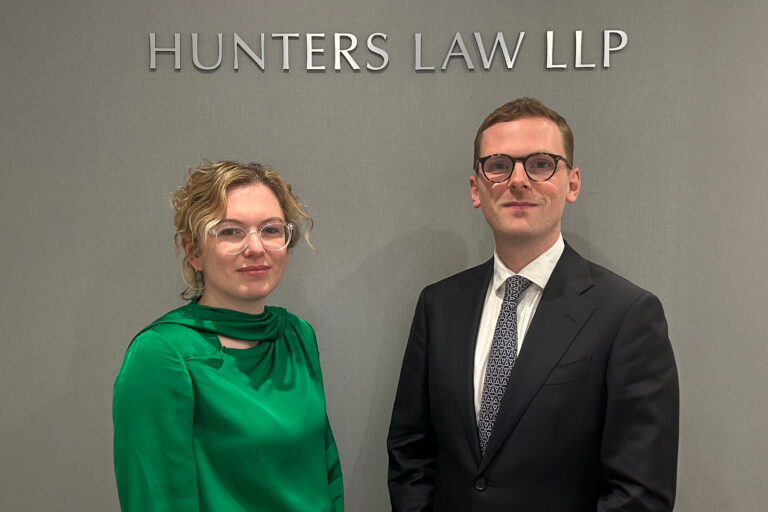Richard Kershaw examines a recent judgment which awarded additional financial compensation on divorce, in Family Law Week

This article was originally published in Family Law Week and can be accessed here.
RC v JC and Compensation Claims
Mr Justice Moor’s decision in RC v JC [2020] EWHC 466 (Fam) to award a wife £400,000 compensation for giving up her legal career to benefit her family made headlines when it was announced in February. Consideration of the recently-released judgment reveals that although the wife won the argument on compensation, her award was far closer to the husband’s proposals than to hers. This, together with Moor J’s warning that compensation claims will succeed only in truly exceptional cases, rings a cautionary note.
Moor J’s approach in RC v JC of awarding a distinct capital sum by way of compensation represents a break with past jurisprudence. I will first consider the previous approach, and then look at the facts and award made in RC v JC, before considering what we can learn from the case.
As readers will know, in Miller v Miller; McFarlane v McFarlane [2006] UKHL 24 the House of Lords established three strands to guide the court in dividing assets following divorce: needs, compensation and sharing. Whilst needs and sharing have become the cornerstones of the law of financial remedies, compensation had largely fallen away, at least as a distinct principle rather than as part of all the circumstances to be taken into account.
In Miller/McFarlane, Lord Nicholls explained that compensation was aimed at redressing any significant prospective economic disparity between the parties arising from the way they conducted their marriage. He explained that on divorce a woman who limited her earning capacity during the marriage will suffer a double loss: the diminution in her own earning capacity, and the loss of a share in her husband’s income which had been enhanced through her contribution to the marriage (paragraph 13). It was anticipated that compensation would be paid from the husband’s enhanced earnings as his earning capacity had been advantaged at the expense of the [wife]. Such payment could either be by way of capital provision, where that was affordable, or through ongoing maintenance (paragraph 32).
Lady Hale described compensation as applying where one party has sustained a relationship-generated economic disadvantage, and the other, having benefited from the circumstances giving rise to that disadvantage, is a high earner with a substantial surplus over what is required to meet both parties’ needs. In such cases a premium above needs can reflect that relationship-generated disadvantage (paragraph 140).
Mrs McFarlane, like the wife in RC v JC, had given up a legal career with a leading City firm. She had earned as much as the husband, a chartered accountant, but left her career to raise the parties’ children. The available capital of £3,000,000 was insufficient to achieve a clean break, but the husband had a very high income. The House of Lords held that joint lives maintenance of £250,000 per annum, an amount significantly in excess of the wife’s needs, was an appropriate way to award the wife compensation in respect of the significant future economic disparity arising from the way the parties conducted their marriage (paragraph 93, per Lord Nicholls).
In the cases that followed, attempts to claim a specific additional sum by way of compensation were given short shrift. Coleridge J in RP v RP [2006] EWHC 3409 indicated that it is neither possible nor desirable to separate out the three strands as if they were heads of claim in a civil action, and that such an approach to compensation was totally misconceived a blind alley at the mouth of which a ‘no entry’ sign should now be firmly planted. Rather, all factors relevant under section 25, including relationship-generated disadvantage, had to be balanced when determining how to distribute the available assets (paragraphs 60 62). Baron J, in Lauder v Lauder [2007] EWHC 1227 (Fam), took into account the wife’s claim for an element of compensation when assessing her needs generously interpreted, explaining that she did not consider it right to seek to separate out need and compensation.
Both of these approaches were endorsed by Sir Mark Potter, then President, in VB v JP [2008] EWHC 112 (Fam). He emphasised that compensation is no more than an aspect of fairness and was best dealt with by a generous assessment of [the wife’s] continuing needs unrestricted by purely budgetary considerations within the section 25 exercise of balancing the relevant factors.
Such an approach was generally followed, with Mostyn J in SA v PA [2014] EWHC 392 (Fam) noting that it was hard to identify any case where compensation had been separately reflected as an additional element. He held that in the very rare and exceptional cases where compensation was relevant, it should be reflected by fixing the periodical payments award (or the multiplicand of a capitalised award) towards the top of the discretionary bracket and that it ought not be reflected by a premium or additional element on top of the needs based award.
Yet in RC v JC, that was exactly the approach taken by Moor J. The parties had met in 1999 when the wife was a trainee, and the husband an Associate, at the same magic circle law firm. The wife became an Associate at the firm on qualification, and the parties began a relationship in 2002/03. The husband became an equity partner shortly thereafter. In 2006 the wife was promoted to Managing Associate; the parties became engaged in 2007 and married in 2008. Shortly before the marriage the wife moved to an in-house legal position at a bank, on the basis that this would enable her to be more hands-on with the couple’s planned children.
The parties went on to have two children, born in 2010 and in 2012. The wife had anticipated returning to work part-time; when this was not possible in the bank’s legal department she took a part-time in role in its business development team, giving up her legal career. In 2016 she was made redundant. This, combined with the end of the marriage in 2017, led to a mental health breakdown, and the wife had not worked since. By contrast, the husband, still at the same firm, now earnt just under £1,000,000 per annum net, and anticipated retiring in four years, after 20 years in the partnership (as was standard practice at the firm).
At the time of the proceedings the wife was 45 and the husband 48. This had been an 11 year marriage (including pre-marital cohabitation). Care of the parties’ two children, aged 8 and 10, was shared. Their total capital was £9.7m. The husband’s original open offer, made several months before trial, proposed an equal division of capital, plus an additional £200,000 by way of capitalised maintenance, though that element was subsequently withdrawn in view of the costs since incurred. The wife sought a broadly equal division of capital, plus joint lives maintenance of £360,000 per annum by way of compensation for relationship-generated disadvantage.
The wife argued that her ability to earn from her career had been damaged irreparably by decisions taken for the benefit of the marriage. She argued that she had been on the road to partnership, which would have given her an income equivalent to that now enjoyed by the husband. Her claim was supported by considerable evidence. This included years of glowing appraisals at the firm with comments such as one of the best litigation associates we have, first rate, and outstandingly strong litigator. She also relied on witness evidence, including from a former partner at the firm who testified that she had been on track for partnership. The husband argued that the wife would not have made partner, in part due to her anxiety and perceived lack of resilience. After considering the evidence, Moor J found that the wife stood a very good chance of becoming a partner at the firm.
Moor J reviewed the relevant passages from Miller/McFarlane, and went on to say that he accepted there have not been many successful compensation claims. In his view, this was because in most cases either there are insufficient assets to do more than cover the parties’ needs, or the wife has, overall, suffered no loss because the amount she would have earned had she continued her career would be less than the amount she would receive from her sharing award. Moor J noted that following Waggott v Waggott [2018] EWCA Civ 727 the husband’s earning capacity was not an asset that can be shared, and that the clean break principle applied. Moor J concluded that whilst it was unusual to find significant relationship generated disadvantage that may lead to a claim for compensation, this was one such case.
Given continuing uncertainty as to the wife’s mental health, Moor J ascribed no earning capacity to her. The wife put her income needs at £331,000 per annum, excluding expenditure for the children. Her case was rather undermined by a budget she had prepared for the family’s financial advisors a few years earlier, putting the family’s expenditure at £155,000 per annum. Noting that this was only an 11 year marriage, Moor J considered that an annual budget of £100,000 for the wife and £50,000 for the children was reasonable.
Moor J then considered each of the three strands from Miller/McFarlane in turn: first need, then sharing, then compensation. He set out that relationship-generated disadvantage was relevant to all three strands.
In respect of sharing, Moor J held that all the assets should be treated as matrimonial, and therefore all else being equal should be divided equally. The husband had argued that assets he had accrued since the end of the relationship should be excluded from sharing. Moor J rejected this for a number of reasons, including that the husband had paid no maintenance to the wife after the separation forcing her to deplete matrimonial assets to meet her needs, but also taking into account that the wife had given up her career.
As to needs, Moor J considered that the wife should be provided for on a joint lives basis, notwithstanding that this was only an eleven year marriage. He held that the relationship-generated disadvantage was relevant to this issue, as if it had not been for the marriage, she would have retained her career in law and potentially very high earnings. After applying Duxbury to calculate the lump sum required to provide £100,000 for life, and providing for housing needs at £2.5m, the total came to £4.85m exactly half the assets.
Turning to compensation, Moor J recorded that quantification had been very difficult. The relevant resource was the husband’s income over the next four years; the wife had already benefitted from his earnings to date through her sharing award. The judge was keen to achieve a clean break, both in view of the statutory steer and to avoid potential further litigation.
Moor J considered what would be affordable for the husband. Given that a significant proportion of his half-share was illiquid, he would need to obtain mortgage lending in order to rehouse, which it would be reasonable for him to repay within four years, and he would be responsible for the children’s costs for many years to come. In respect of the wife, Moor J noted that though there was a very good chance she would have made partner, it was not certain. Essentially the judge sought to balance fairness to the wife with enabling the husband to meet his commitments going forward.
Moor J alighted on the figure of £400,000 as the appropriate compensation for the wife’s relationship-generated disadvantage, to be paid in addition to her half share of the assets. The judge commented that this could be portrayed as an additional £100,000 per annum for the likely remainder of the husband’s likely time at the firm. Overall the wife’s award came to 54% of the assets.
The judgment concludes with a warning that cases where there has been relationship generated disadvantage sufficient to justify an award of compensation will be exceptional, and litigants should think long and hard before launching a claim.
The judgment marks a clear departure from past jurisprudence by awarding a distinct capital sum by way of compensation. Whilst the Court of Appeal in Waggott clarified that there is no right to share in a former spouse’s future income, RC v JC suggests that in exceptional cases there is right to compensation from it. This will be the case where:
- There is strong evidence to support of the existence of relationship-generated disadvantage resulting from the wife giving up an established career for the benefit of the family;
- There are sufficient assets to do more than meet the parties’ needs;
- The fruits of the husband’s career are not so great that the wife’s needs/sharing award will put her in a better financial position than she would have been had her career continued.
Moor J could have reached the same financial outcome by approaching compensation in the traditional way, by more generously assessing the quantum of the wife’s needs (on which he took a relatively firm line). Moor J did take relationship-generated disadvantage into account as part of all the circumstances when determining which assets should be considered matrimonial, and the appropriate duration of maintenance. It is unclear why he did not do so in respect of quantum as well, avoiding the need for a separate compensation award.
Arguably, Moor J’s departure from the established approach towards compensation is not a helpful development. An approach based on considering relationship-generated disadvantage as part of the wider circumstances of the case to be taken into account better connects this element with the family’s wider factual matrix and feels less arbitrary. Moor J’s approach may also make negotiations more difficult: if one party is seeking a distinct additional lump sum which the other opposes, that may be more challenging to resolve than if the parties are at different places on the spectrum of possible interpretations of needs and sharing. It remains to be seen whether Moor J’s approach will be followed in the rare cases where compensation applies.
One final, striking, point is that although the wife won what was clearly a very hard-fought, and no doubt costly, argument on compensation, her ultimate award was only fractionally higher than the husband’s open offer, and far short of her own. It is important not to underestimate the non-financial value to many clients of achieving validation of their narrative, particularly if their achievements and sacrifices have long been minimised. However, particularly given that compensation claims are likely to be expensive to pursue given the weighty evidence that will be required to substantiate them, it is important to carry out a costs-benefit analysis with clients when deciding whether to pursue even a strong compensation argument.





